Creating motivated dialogue is one of those things that authors either know how to do or they don’t. However, it doesn’t have to be that way. If those struggling writers follow some simple rules of thumb, their books are sure to improve.
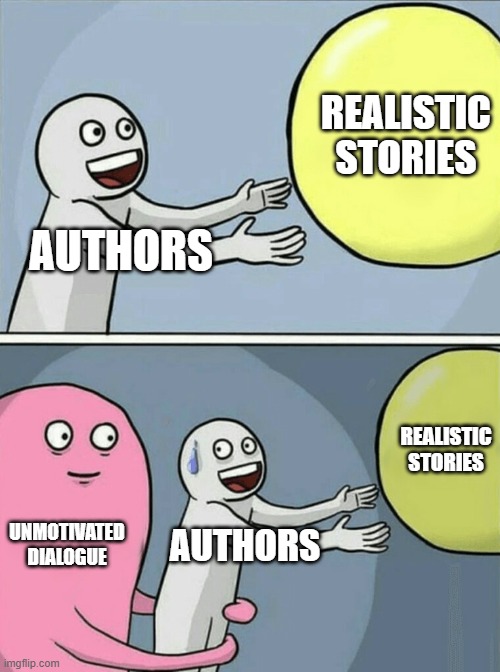
Why Characters Say the Things They Do
The first step in creating motivated dialogue is deciding the exact reason why your characters say the things they do. Without that concrete knowledge, your dialogue is sure to feel unnatural.
Take a look at this line of text, for example:
“I hate you,” Molly said.
“Okay,” George replied.
Without a clear reason for why Molly and George say the things they say, audiences are left to fill in the gaps themselves. This exact exchange, though, could play out several different ways, depending on the motivation.
If Molly truly hates George, but George does not care, the scene might play out like this:
“I hate you,” Molly said, glaring daggers at George.
He shrugged. “Okay.”
Alternately, if Molly truly hates George, but George does care, the scene would be different.
“I hate you,” Molly said, glaring daggers at George.
He frowned, his eyes welling with tears. “Okay.”
And if Molly and George are having a playful exchange, the scene would still read differently.
“I hate you,” Molly said, giving George a playful shove.
George smiled, rubbing at the spot Molly pushed him. “Okay.”
As you can probably see, motivations make or break a scene. In these four examples, the dialogue stayed exactly the same. With different motivations, though, the lines read differently.
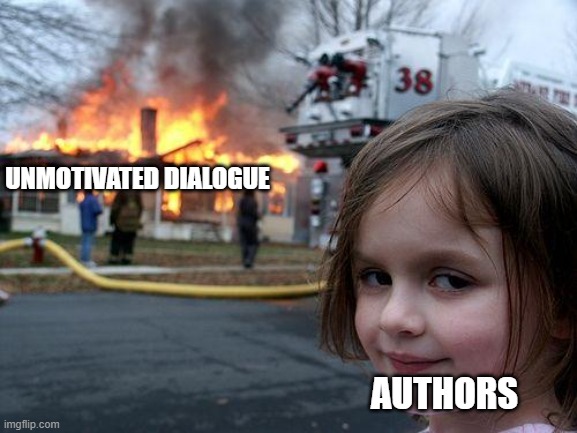
Motivating with Action
One key way to motivate dialogue is through character actions. In the previous examples, as you may have noticed, the only thing that changed from one version to the next was the characters’ actions. In general, actions can make all the difference in motivating dialogue.
Strong actions, for instance, can help a scene come to life.
Angelo grit his teeth and puffed out his chest, like a gorilla preparing for a fight. “What did you just say?”
His opponent, David, raised an eyebrow. “What are you gonna do, Angie? Hit me?”
In the same way, lack of action has the ability to completely mute a scene’s impact.
Angelo said, “What did you just say?”
David said, “What are you gonna do, Angie? Hit me?”
Does the scene still make sense? Sure. Is it as fun? I don’t think so.
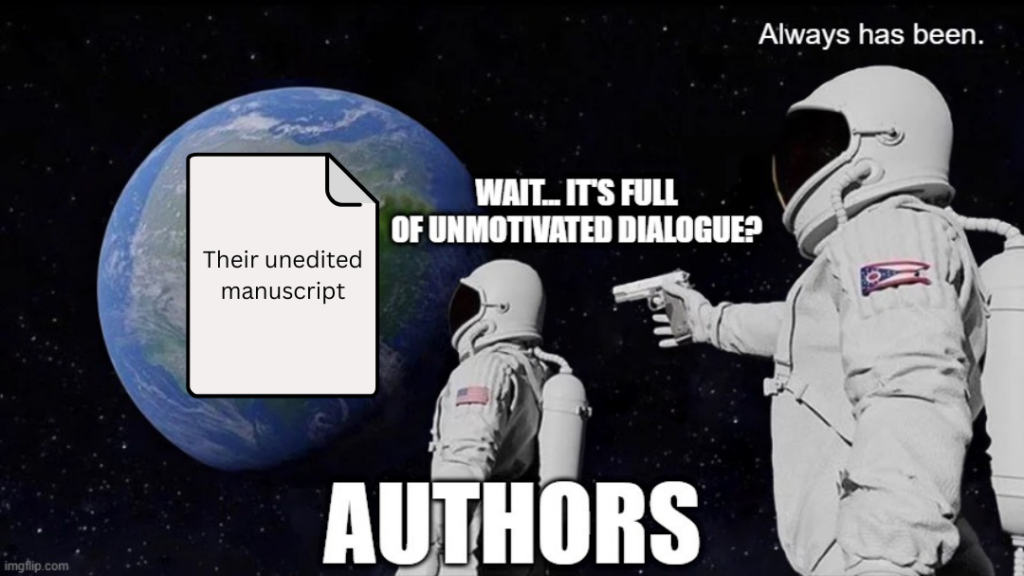
Changing Topics in Dialogue
If writers motivate their dialogue, they are a lot less likely to have jarring transitions within their characters’ speech. Without motivations, though, topic changes can seem to come out of nowhere.
“I love my mom. Did you remember to pick up bread at the store?”
Readers are left wondering, “Where did that come from?” Luckily, there are some methods authors can take to make their topic transitions a lot smoother.
The first option is to include some kind of pause and transitional phrase.
“I love my mom,” Sally said. “Oh, by the way, did you remember to pick up bread at the store?”
The next option, once again, involves action.
Sally lifted the image of her mother in a wedding dress, tears welling in her eyes. “I love my mom.” Setting the image down, she glanced back over at Jeremy. “Oh, by the way, did you remember to pick up bread at the store?”
The third and final option involves pauses, action, and additional dialogue.
Sally lifted the image of her mother in a wedding dress, tears welling in her eyes. “I love my mom.”
“I know you do.” Jeremy lowered his eyes to the ground. “Do you need a minute?”
Sniffling, Sally set the image down and flashed Jeremy her most convincing grin. “It’s not a big deal. Oh, by the way, did you remember to pick up bread at the store?”
Together, these tools work to make topic changes feel earned and important, rather than coming across as jarring and confusing.
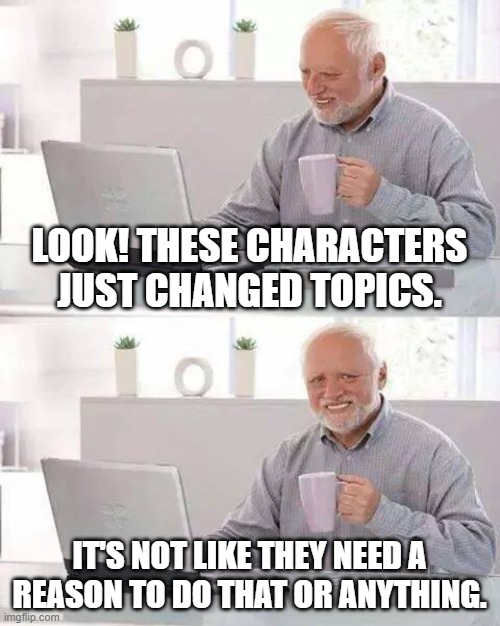
Motivations to Start Talking
Characters also need reasons to start talking in the first place. Although people enter into unnecessary and boring conversations in real life, those types of interactions tend to drag a book down and turn readers away.
Let’s look at this interaction, for example:
“Hello. How are you?” Marcia asked.
“I’m fine. And you?” Richard replied.
“I’m great.”
“Well, that’s good. I’ll be seeing you then.”
That whole scene seemed unnecessary, didn’t it?
What would happen if the same characters had reasons for entering into the conversation?
Marcia spotted Richard and bit down on her tongue. He had some audacity, showing up unannounced after everything he’d done.
Stomping over to him, Marcia folded her arms. “Hello,” she bit out. “How are you?”
Richard grinned innocently. “I’m fine. And you?”
Marcia narrowed her eyes at him. “I’m great.”
“Well, that’s good.” He pulled a wine glass off the buffet table and downed it in one gulp. “I’ll be seeing you then.”
As he sauntered off, Marcia grabbed her own glass of wine. She chugged the contents and then tossed the glass against the wall. It shattered, sending a large bang reverberating around the room.
Richard glanced back at her, raising an eyebrow.
After smoothing down her shirt, Marcia stood up tall and left the room.
When characters have reasons to join conversations, the conversations suddenly become more interesting.
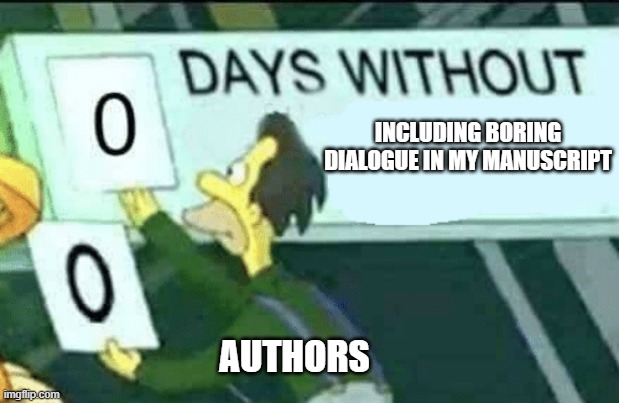
Why It Matters
Dialogue is one of the most important tools authors have in their arsenals. That being said, unmotivated dialogue can quickly slog a story down, leaving readers bored and frustrated. When authors take the time to analyze their characters’ conversations, ensuring that each line they speak is motivated, their stories start to sing. So, the next time any of you dear authors get the comment that “this conversation didn’t feel like it was going anywhere,” I encourage you to take a moment and motivate your dialogue. It could make all the difference.
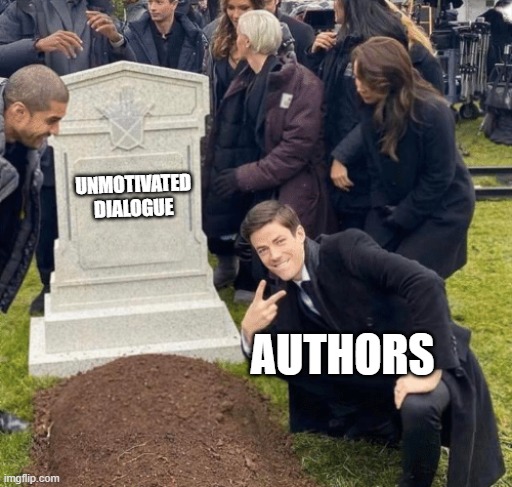
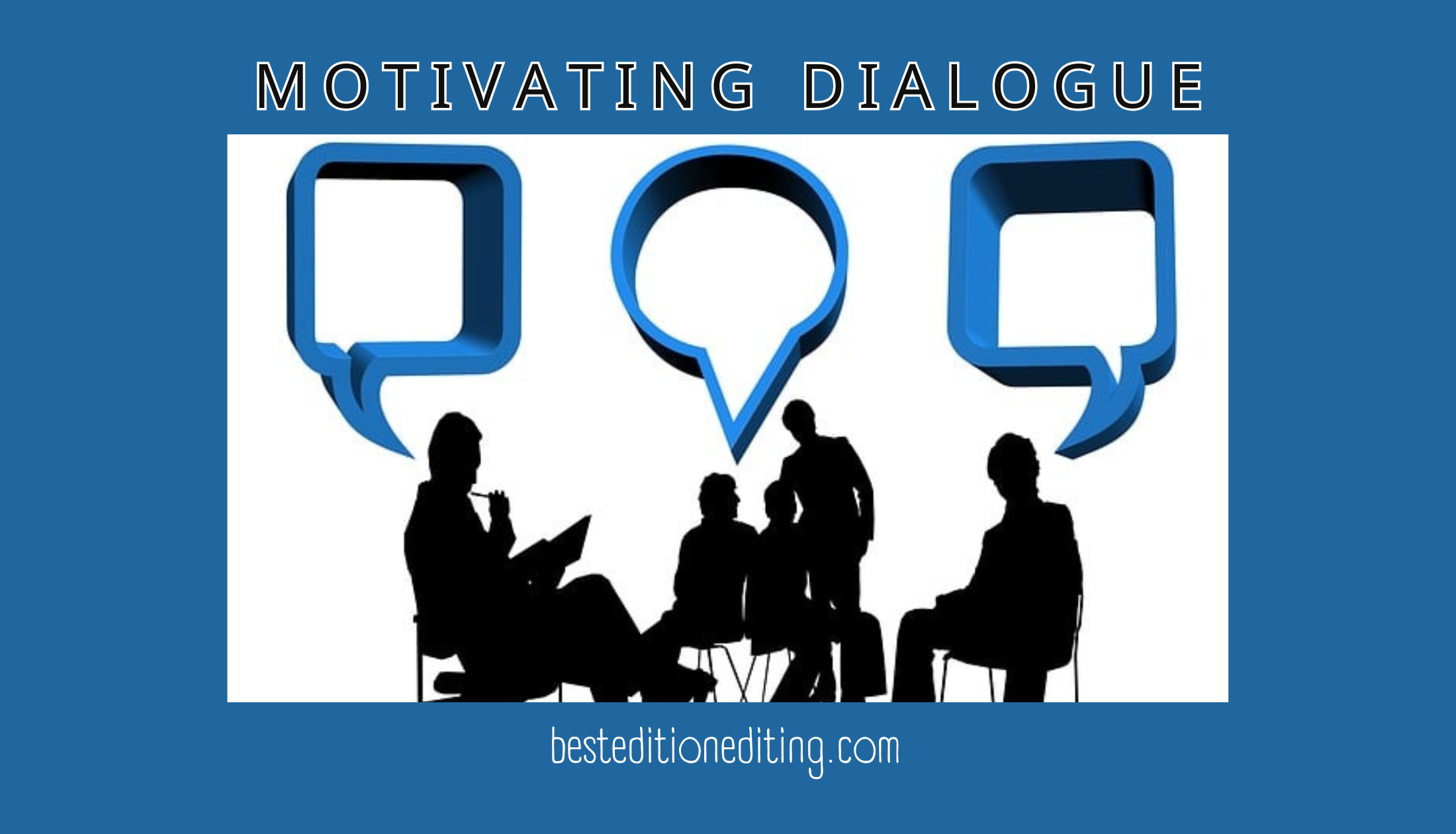
View comments
+ Leave a comment